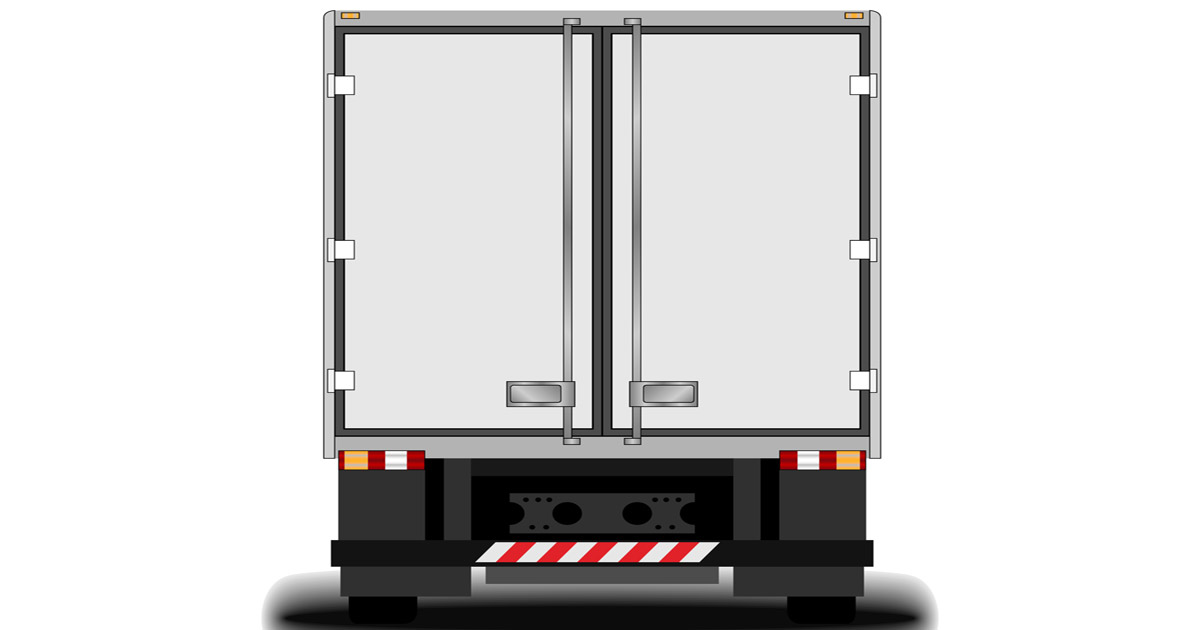Truck underride crashes are some of the deadliest accidents involving large tractor-trailers and passenger vehicles or motorcycles. Underride collisions occur when a passenger vehicle collides into and slides underneath the trailer. According to the Insurance Institute for Highway Safety (IIHS), nearly 600 deaths are the result of underride accidents each year in the United States. There are three types of underride crashes:
- Rear-end collisions: The deadliest and most common type of underride crashes occur when a passenger vehicle strikes the trailer from the rear and sliding underneath.
- Side-impact collisions: Side-impact underrides occur when a smaller vehicle makes contact with the side of the trailer, typically at an intersection, or as the truck is merging, changing lanes, or making wide turns. This type of accident often causes the roof of the passenger vehicle to be sheared off, causing catastrophic injuries.
- Offset collisions: In an offset collision, a passenger vehicle strikes the corner of the trailer, typically during a turn. This type of collision can result in less severe injuries but can be fatal if the metal corner of the trailer breaches the interior.
The U.S. Department of Transportation (USDOT) requires commercial trucks to be outfitted with rear guards as an underride prevention measure, along with reflective tape on the back and sides of the trailer for increased visibility at night. Rear underride guards are steel bars that hang under the rear of the trailer to prevent passenger vehicles from sliding under the trailer during a collision.
The National Highway Traffic Safety Administration (NHTSA) recently finalized a new rule updating two Federal Motor Vehicle Safety Standards regarding underride accidents. The rule, together with the creation of a federal advisory committee and increased research on underride protection, is part of the USDOT 2022 National Roadway Safety Strategy.
The rule requires that rear impact guards with sufficient strength and energy absorption to protect occupants of passenger vehicles be installed on commercial trailers and semi-trailers and capable of sustaining a range of crash scenarios. Side underride guards are not yet required but are being researched for effectiveness and potential future requirements.
The NHTSA states that the new rule will not only improve protection for motorists, but also meets a critical Congressional mandate under the Bipartisan Infrastructure Law (BIL). Per the law, the NHTSA is implementing a number of other underride provisions, including:
- Creating a federal advisory committee to research side underride guards to assess their effectiveness, feasibility, benefits, costs, and impact on intermodal operations.
- Publishing advanced notice of proposed rulemaking in a Federal Register notice to consider requirements for side underride guards. The effort meets an additional provision of the BIL requiring the reporting of research findings on side underride guards be released for public comment.
- Improving underride accident data collection by recommending each state include underride collisions in the state’s crash data system and providing education materials to state and local law enforcement regarding how to identify and record underride accidents.
- Researching newer rear-impact guard designs offering increased protection for motorists in a number of crash scenarios.
Despite regulations, not all truck owners or companies adhere to them, increasing the risk of underride accidents due to:
- Lack of guards: Trailers are not outfitted with rear guards – two vertical steel bars extending down from the frame to a horizontal crossbar – approximately 2 feet from the ground.
- Improper guards: Guards that do not meet the strength and impact regulations, are installed too high, or are too small for the trailer are useless for protection and fail during a crash.
- Poor visibility: Running lights, taillights, and reflective tape that are not in working order, missing, dirty, or worn prevent motorists from seeing a trailer or judging its size and distance.
- Outdated guards: Regulations regarding the strength and effectiveness of required guards is frequently updated over time as designs improve. The trucking industry is often in opposition to regulation changes due to the increased cost of replacing them on their fleets. Unfortunately, many companies do not replace them as a result.
What Are Some Common Causes of Underride Truck Accidents?
Underride accidents can be caused by passenger vehicles or the truck drivers due to many causes, the most common being:
- Passenger vehicles tailgating trucks or merging without looking.
- Missing underride guards.
- Inclement weather conditions.
- Speeding.
- Sudden stops or braking.
- Poor truck maintenance.
- Low visibility of the trailer on the road.
- Drivers fail to use flares or reflective triangle signs when stopped on the shoulder.
- Distracted drivers.
- Failing to check blind spots.
Who Is Liable for Underride Truck Accidents?
Determining liability in accidents involving commercial trucks is more complex than accidents between two passenger cars because there may be multiple responsible parties. The driver, the truck owner, and the trucking company may all be liable for the accident, depending on the circumstances of the crash.
The driver may be at fault if their actions directly led to the crash, such as failing to check blind spots before changing lanes, speeding, or sudden stops. The trucking company may be responsible for:
- Failing to install properly sized rear guards or those not meeting strength and impact requirements.
- Installing guards too high.
- Lack of monitoring drivers’ drug and alcohol use.
- Poor truck or trailer maintenance.
- Failing to maintain properly functioning running lights or taillights.
- Lack of reflective markings on the trailer.
- Providing drivers with unsafe vehicles.
- Not servicing vehicles.
- Improper or lack of driver training.
Keep in mind that during rear-end collisions, there is a presumption that the rear vehicle driver is responsible, including when the front vehicle is a commercial truck. Establishing liability in rear-end underride collisions can be more difficult as insurance companies will likely challenge liability claims.
In addition to companies or drivers, shipping companies may be at fault if their freight caused the accident, or manufacturers of the truck, trailer, or guards if design or manufacturing defects are responsible for the accident.
Cincinnati Truck Accident Lawyers at Wolterman Law Office Represent Clients Injured in Underride Truck Crashes
Underride crashes often result in catastrophic injuries. Those who survive are often left with permanently disabling conditions and exorbitant medical costs. If you or a loved one has been injured in an underride accident, speak with our seasoned Cincinnati truck accident lawyers at Wolterman Law Office. Call us at 513-488-1135 or contact us online to schedule a free consultation. Located in Loveland Ohio, we serve clients in Hamilton County, Fairfield, Norwood, and Forest Park.


